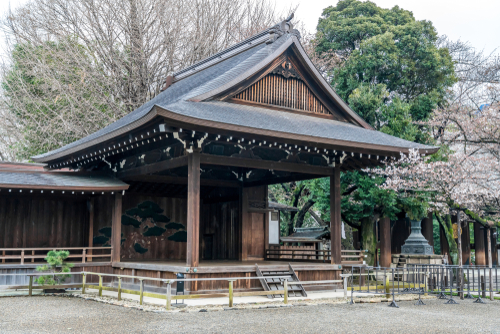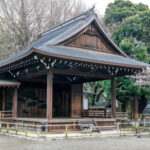
The Land of Kamakura Speaks: A Tale of Fear,…
At a construction site in Kamakura, a series of inexplicable problems arose, bringing the construction project to a standstill. Suspecting an issue with the land itself, the site manager sought help, and thus, Noah and I were called to investigate.
Noah walked around the site for a while before identifying a specific area where a powerful energy of fear remained. This energy affected not only the construction but also the surrounding residents, causing them to suffer from mental instability and unexpected misfortunes. As he delved deeper, he discovered that the land was saturated with not only fear but also anger, hatred, deep sorrow, and despair.
Feeling the energy of the land, Noah began the process of purification. During this process, visions of past tragedies that had occurred there started to emerge.
Slowly, Noah began to narrate the history of the land:
”During the Kamakura period around the years 1200-1300, a man lived here. He was a musician who played gagaku, the Japanese traditional court music. However, his fortune turned for the worse when the Komparu school of Noh flourished and gained favor among the warrior class. With skilled performers of small hand drums and master dancers rising to fame, the public turned their attention to them, leaving the musician without an audience or students. As a result, he quickly fell into poverty and struggled to survive.
In desperation, he devised a new way to earn money. At that time, high-ranking samurai were prohibited from taking women to the battlefield, which led to the widespread practice of taking young boys as their attendants—a tradition known as ‘chigo-ai’ (pederastic relationships between samurai and boys). The musician took advantage of this trend by training young boys in dance, selling them to samurai as entertainers and companions.
He obtained boys through human trafficking and kidnapping, then confined them in a dark underground cellar, where he forced them to learn chigo-mai, a type of dance. The boys, who had been stolen from their homes or sold, were trapped in darkness, trembling in fear, and had no choice but to obey the musician. They endured constant beatings and starvation, but the worst moments came at night. If a boy was taken away during a silent night, he never returned. He was either sold off or killed. If the musician deemed a boy useless, he had no hesitation in killing him, believing that feeding an unproductive child was a waste.
The boys suffered immensely, watching their fellow captives die of starvation or from brutal punishments. The musician deliberately instilled fear in them, ensuring their absolute obedience. Those who fell ill were abandoned and left to die. The cruelty of the musician was boundless, and the boys cried every single day, trapped in a world of fear and hatred. In the pitch-black cellar, someone was always weeping, trembling from the cold and hunger. The walls of the underground chamber absorbed their blood, tears, and terror.
The musician continued this horrific practice for many years, sacrificing countless young lives. At night, high-ranking samurai secretly visited him to purchase boys, and because they held power, authorities turned a blind eye to his actions.
However, as time passed, fate turned against him. One day, an adult man visited the aging musician. This man was one of the boys the musician had once raised and sold. He had spent his life plotting revenge for himself and his lost companions. Having grown strong and skilled with a sword, he had been waiting for the moment to avenge those who had perished at the musician’s hands.
He stabbed the musician in the side, ensuring a slow and agonizing death rather than an instant one. He deliberately targeted the musician’s abdomen and liver, so he would suffer for days before dying. The emotions the musician experienced in his final moments—his agony, regret, and terror—were deeply imprinted upon the land.
What a tragic and horrific history. But Noah’s story did not end there.
He continued:
”This man, after his death, was reincarnated multiple times and kept returning to this land. The energy of the boys’ resentment pulled him back repeatedly. During the Edo period, he was executed here by beheading. In a much more recent life, he suffered from severe liver disease and died in misery. From a young age, he was plagued by nightmares, lived in misfortune, drowned himself in alcohol, and hid his perverse desires from society. His final moments were filled with loneliness and regret.”
After recounting this history, Noah completed the purification of the land.
From that point on, the construction project proceeded smoothly, and all problems ceased. The lingering energy of hatred that had stained the land was finally released.
Later, during the construction, the underground chamber where the boys had been imprisoned was discovered. It became clear that the dark energy had been affecting the residents of the area for generations. Family breakdowns, lonely deaths in old age, lives filled with misfortune—these were all manifestations of the deep-seated resentment embedded in the land. Now, at last, it had been freed from its tragic past.
